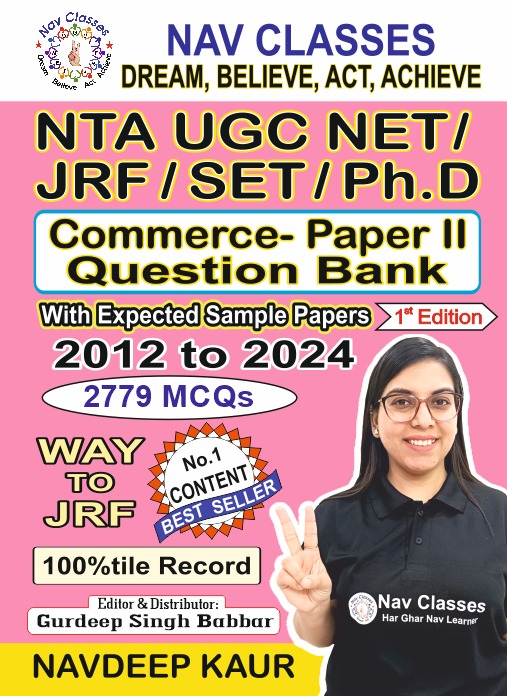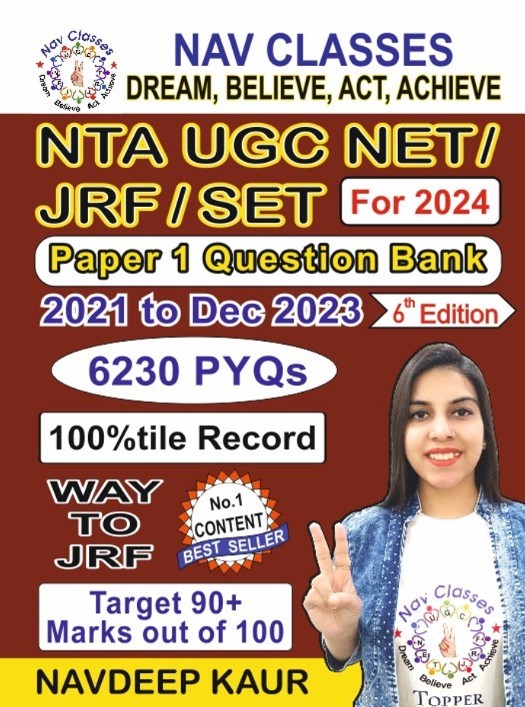1. A computer network enables two or more computers to
(1) Increase the speed
(2) Share data and hardware resources
(3) Increase the work
(4) Monitor the software
SHOW ANSWER
Explanation: A computer network is a collection of computers that share resources located on or supported by network nodes using common communication protocols over digital interconnections.
Telecommunication network technologies, such as physically wired, optical, and wireless radio-frequency methods, are used to create interconnections between nodes.
Personal computers, servers, networking hardware, and other specialised or general-purpose hosts are examples of nodes in a computer network.
©navclasses
2. Statement I: Operators are special symbols that are used to perform calculations, make comparisons and check logical condition.
Statement II: Relational operators are used for arithmetic operations.
A. Both Statement I and Statement II are true
B. Both Statement I and Statement II are false
C. Statement I is correct but Statement II is false
D. Statement I is incorrect but Statement II is true
SHOW ANSWER
Explanation: NA ©navclasses
3. The entry of new media has made online learning :
1. Secondary source-based
2. Institution-centric
3. Dependent on personal sources
4. Independent
SHOW ANSWER
Explanation: Because of new media like virtual classroom, internet online learning becomes independent as learner can learn anywhere from anyone it helps students work through difficult concepts with multiple resources.
©navclasses
4. Which of the following ICT initiatives of MHRD deal with E-governance for institutions/universities?
1. SAMARTH
2. IRINS
3. VIDWAN
4. SWAYAM
SHOW ANSWER
Explanation: The aim of the SAMARTH e-Government platform is to provide quality education to students at all levels of higher education institutions (HEIs). The aim of this initiative is to simplify the Institute’s processes. This initiative would improve efficiency in the institute by providing seamless access to knowledge and allowing it to be used for a variety of purposes.
©navclasses
5. Extra browser window of commercials that open automatically on browsing web pages is called
1. Virus
2. Spam
3. Phishing
4. Pop-up
SHOW ANSWER
Explanation: Pop-up is an online advertiser’s graphical user interface display area, typically a small window, that appears in the foreground of the visual.
Spam are unsolicited or unwanted emails for commercial purpose
Virus and phishing are malwares to cheat people
©navclasses
6. Statement I: World Wide Web is not an example of client-server technology.
Statement II: FTP is a service available on the internet.
1. Both Statement I and Statement II are true
2. Both Statement I and Statement II are false
3. Statement I is correct but Statement II is false
4. Statement I is incorrect but Statement II is true
SHOW ANSWER
Explanation: provide a resource or service, and clients, who request that service.
Email, network printing, and the World Wide Web are examples of computer systems that use the client-server model.
> The File Transfer Protocol (FTP) service is the most used method of sending large files over the Internet.
©navclasses
7. Which of the following statements is/are true?
A. Fibre optic cables are wooden fibers to provide high-quality transmission.
B. Wireless communication provides anytime, anywhere connection to both computers and telephones.
C. Mobile phones are capable of providing voice communication and also digital messaging service.
Choose the correct answer from the options given below :
(1) (A) and (C) only
(2) (B) and (C) only
(3) (A) and (B) only
(4) (C) only
SHOW ANSWER
Explanation: Fibre optic cables are glass wired to provide high quality transmission.
B and C both are correct
©navclasses
8. Consider the following technologies :
A. Microprocessor
B. Transistor
C. Vaccum Tube
D. Artificial Intelligence
Arrange the above technologies of different computer generations in the order they have been used. Start from the technology that was used in the first generation. Choose the correct answer from the options given below:
A. (C). (A), (B), (D)
B. (B), (C), (A), (D)
C. (C). (B), (A), (D)
D. (C), (B), (D), (A)
SHOW ANSWER
Explanation: First generation: Vacuum tubes
Second generation: Transistors
Third generation: Integrated circuits
Fourth generation: ICs with Very large scale integration
First generation: ICs with Ultra large scale integration
©navclasses
9. In display technology, CRT stands for
(1) Cathode Ray Transmission
(2) Computer Ray Transmission
(3) Cathode Ray Tube
(4) Cathode Ray Transducer
SHOW ANSWER
Explanation: CRT stands for cathode ray tube, which is used in computer displays and televisions.
©navclasses
10. Which of the following statements are true?
A. An algorithm may produce no output
B. An algorithm expressed in a programming language is called a computer program.
C. An algorithm is expressed in a graphical form known as a flowchart
D. An algorithm can have an infinite sequence of instructions.
(1) (A) and (B) only
(2) (A), (B) and (D) only
(3) (C) and (D) only
(4) (B) and (C) only
SHOW ANSWER
Explanation: An algorithm is a collection of well-defined, computer-implementable instructions expressed as flow chart that are used to solve a problem or perform a computation. Algorithms are invariably unambiguous, clear and provides specifications for tasks like measurements, data processing, and automatic reasoning.
Natural languages, pseudocode, flowcharts, drakon-charts, programming languages, and control tables are all examples of how algorithms can be expressed. Algorithm has well defined output, well defined intput, finiteness, clear and unambiguous, physical language independence. ©navclasses







2 responses
mam 9\10 as 3 question i was not knowing answer thanku #navclasses#dbaa#navlearner
6/10
Thank you ma’am